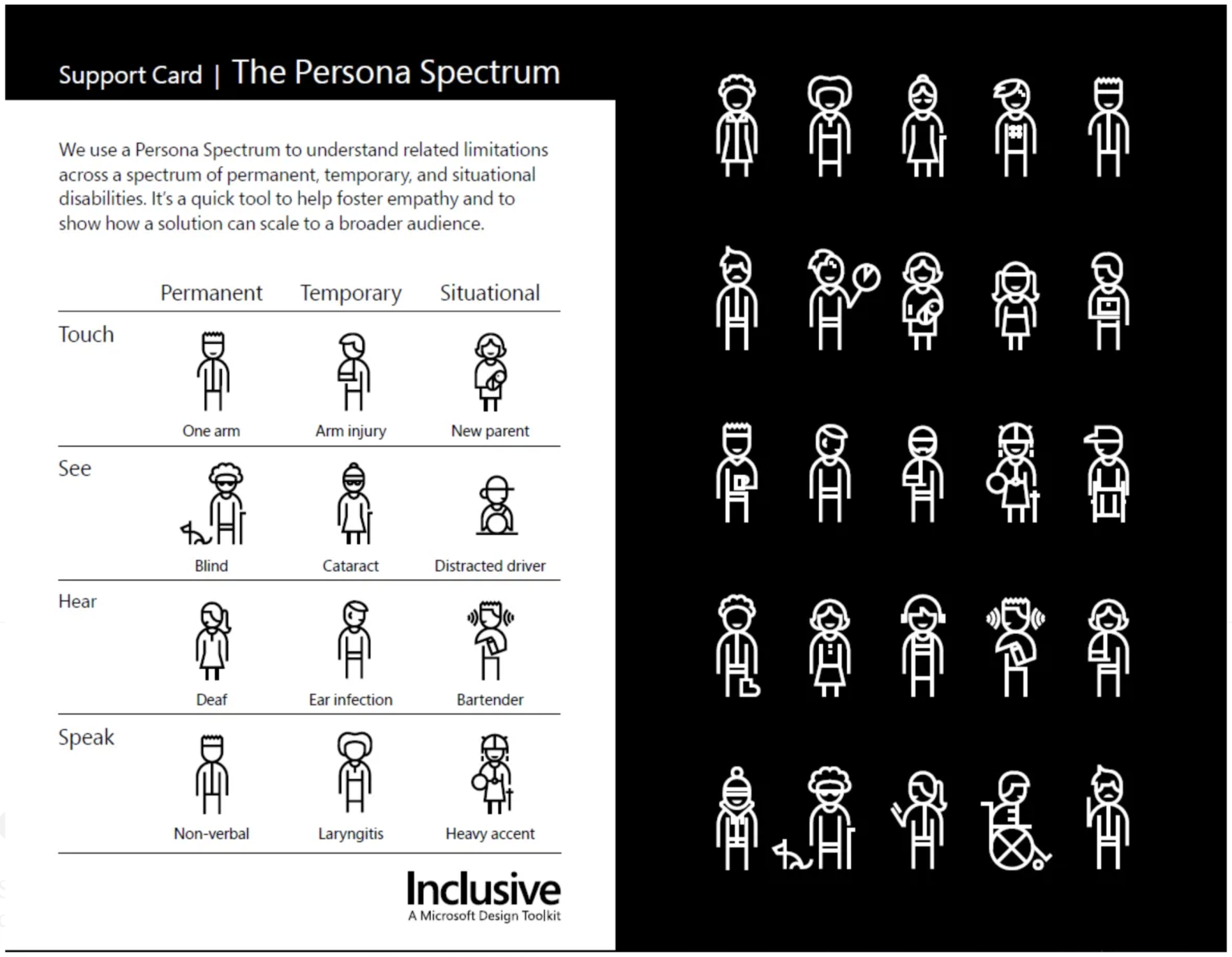Modern design is more than just how things look; it’s about making sure everyone is included, especially when we talk about treating all genders equally. This is important because it helps with big issues like protecting the environment and building a better future for everyone. When we listen to different viewpoints, from all genders, our creations and solutions work better for everyone, not just a select group. But this hasn’t always been the case.
Why does gender-inclusive design matter?
For too long, design has been one-size-fits-all, mostly tailored to men’s needs, overlooking the diversity within our society. This has led to everything from ill-fitting safety gear for women to work environments that don’t consider work-life balance. Yet, as women’s roles evolve globally, the call for designs that embrace everyone’s needs is louder than ever. From cars to tech, and healthcare to fashion, incorporating women’s insights is key to creating safer, more comfortable, and universally effective solutions. Bottom line, we need to work towards a future that works for us all.
Inclusive workplaces recognize that diversity isn't a checkbox; it's a design imperative, fostering environments where all genders thrive authentically.
Lakshmi Gondi

The Path Forward: Designing for a Gender-Inclusive Future
The journey towards a gender-inclusive future requires the collective effort of designers, policymakers, businesses, and communities. It demands a shift in perspective — to overcome ingrained biases, it’s essential to question assumptions that exclude women from design considerations and to embrace diversity within the category of “women” itself. This involves:
- Including women in design processes: Involving women’s perspectives from the design start, ensuring solutions meet their needs. It’s about broadening our understanding, considering various experiences across the gender spectrum to uncover hidden biases. This inclusive approach guarantees our creations serve a diverse audience, making for smarter, more adaptable designs.
- Emphasizing diversity at a human scale: It’s crucial to design environments that are versatile and accommodating, considering the Persona Spectrum. The Persona Spectrum is a tool in user experience design that considers a wide range of user abilities and scenarios, from temporary impairments to permanent disabilities. It helps in creating inclusive designs by ensuring products are accessible to users with various needs. This approach means creating spaces with flexible features like adjustable furniture and customizable lighting, ensuring they can meet a wide array of needs and preferences. By designing with the Persona Spectrum in mind, spaces become inherently adaptable, catering to the diverse requirements of individuals without the constant need for redesigns, making inclusivity a core aspect of the design process.
- Understanding the impact on women’s lives: Exploring the nuanced effects of design decisions on women involves a detailed examination of qualitative data and individual stories. This deep dive into their experiences offers a clearer picture of how certain designs can uniquely influence their daily lives, whether in the workplace, public spaces, or digital environments. Analyzing personal narratives sheds light on the broader implications of design, encouraging a more empathetic and inclusive approach. Through such understanding, designers can create environments and products that genuinely support and uplift women, reflecting their specific needs and challenges.
Incorporating realistic measures for inclusive environments
What do these look like in the workplace? Creating truly inclusive environments requires tangible steps:
- Support for working mothers through well-designed childcare facilities and dedicated lactation rooms.
- Designated parking spots for parents bringing their kids to work.
- Provision of all gender/single user restrooms, quiet zones for rest and relaxation
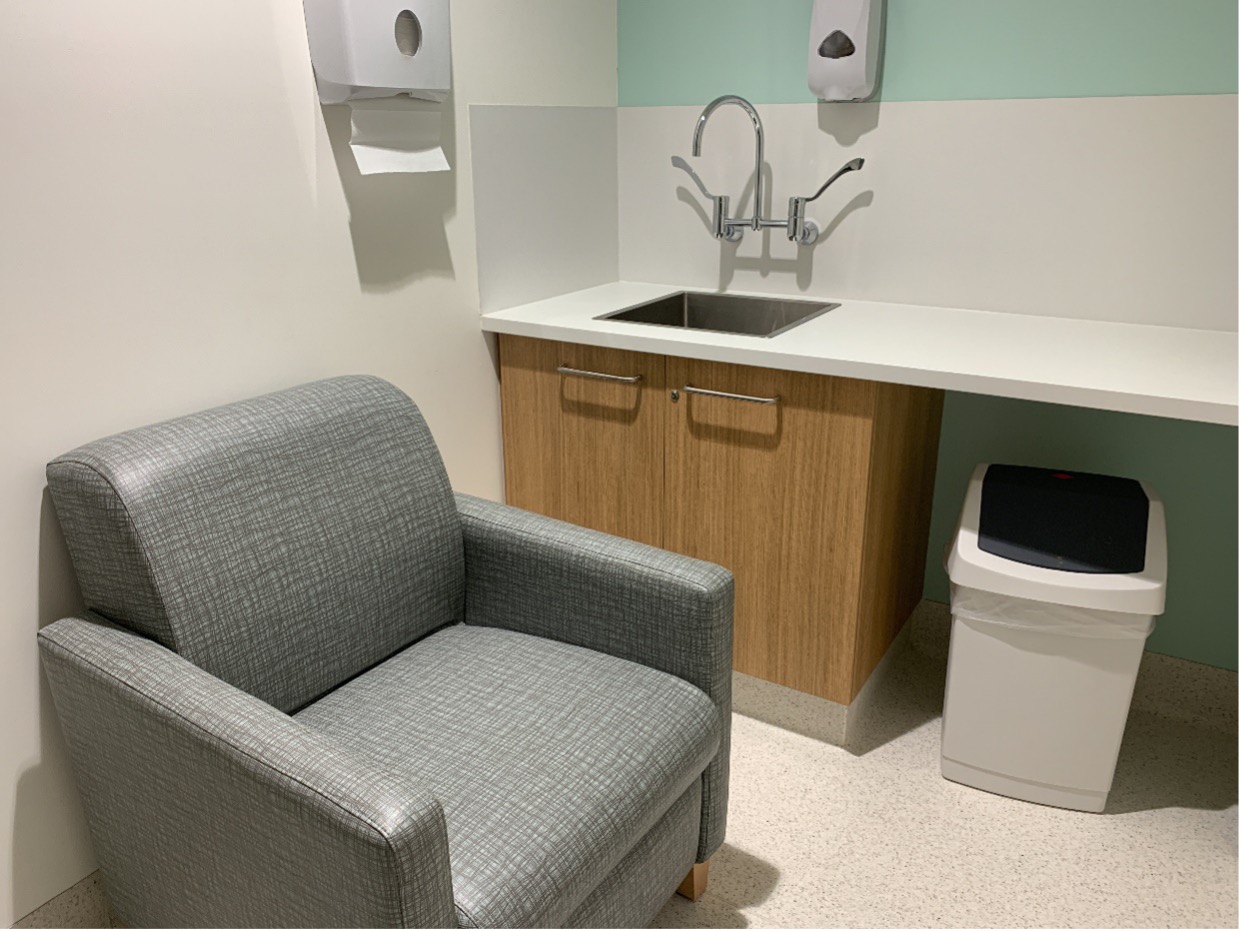
An example of a Lactation room
Ergonomic designs that accommodate a diverse range of needs (such as adjustable workstations, seating options, good handle grip for entry doors etc.) promoting comfort and productivity.
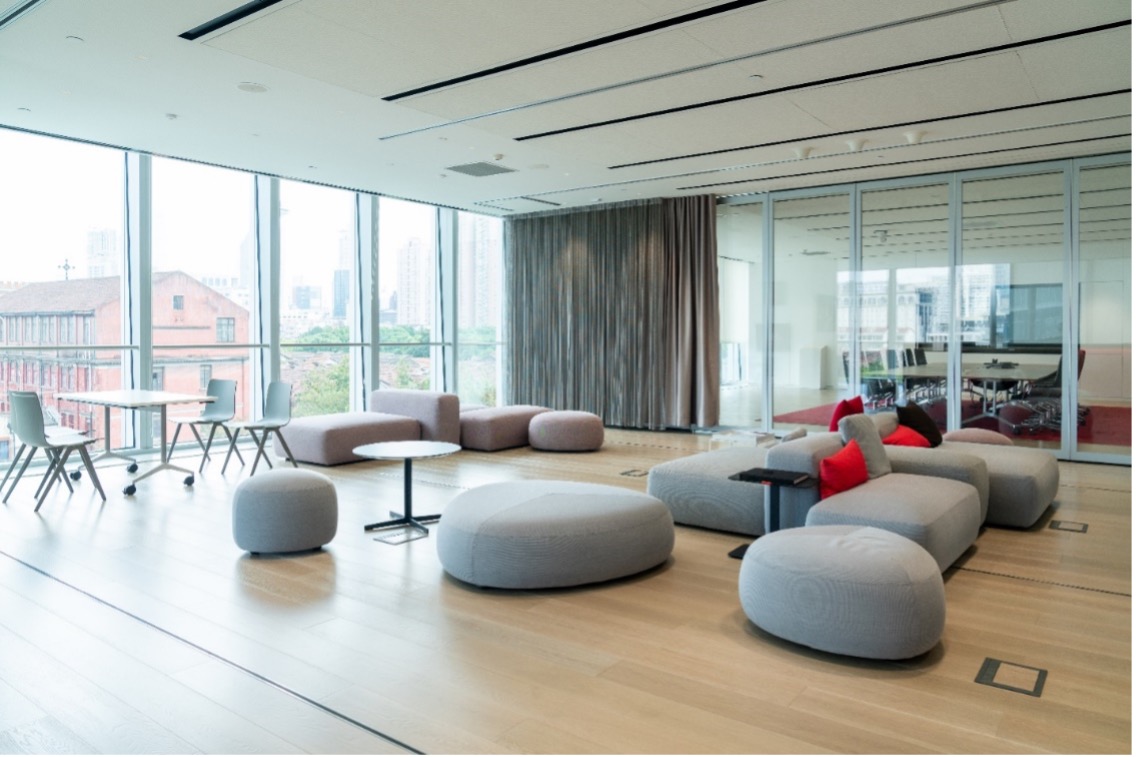
Accommodating a diverse range of seating options
- Considerations like sound-muffling flooring
- Installing privacy panels under workstations and meeting tables.
- The visual aspects of an environment, including artwork, signage, and marketing materials, should reflect gender diversity. Inclusive representation helps to foster a sense of belonging and acceptance for all genders, making the workplace a more welcoming and inclusive space.
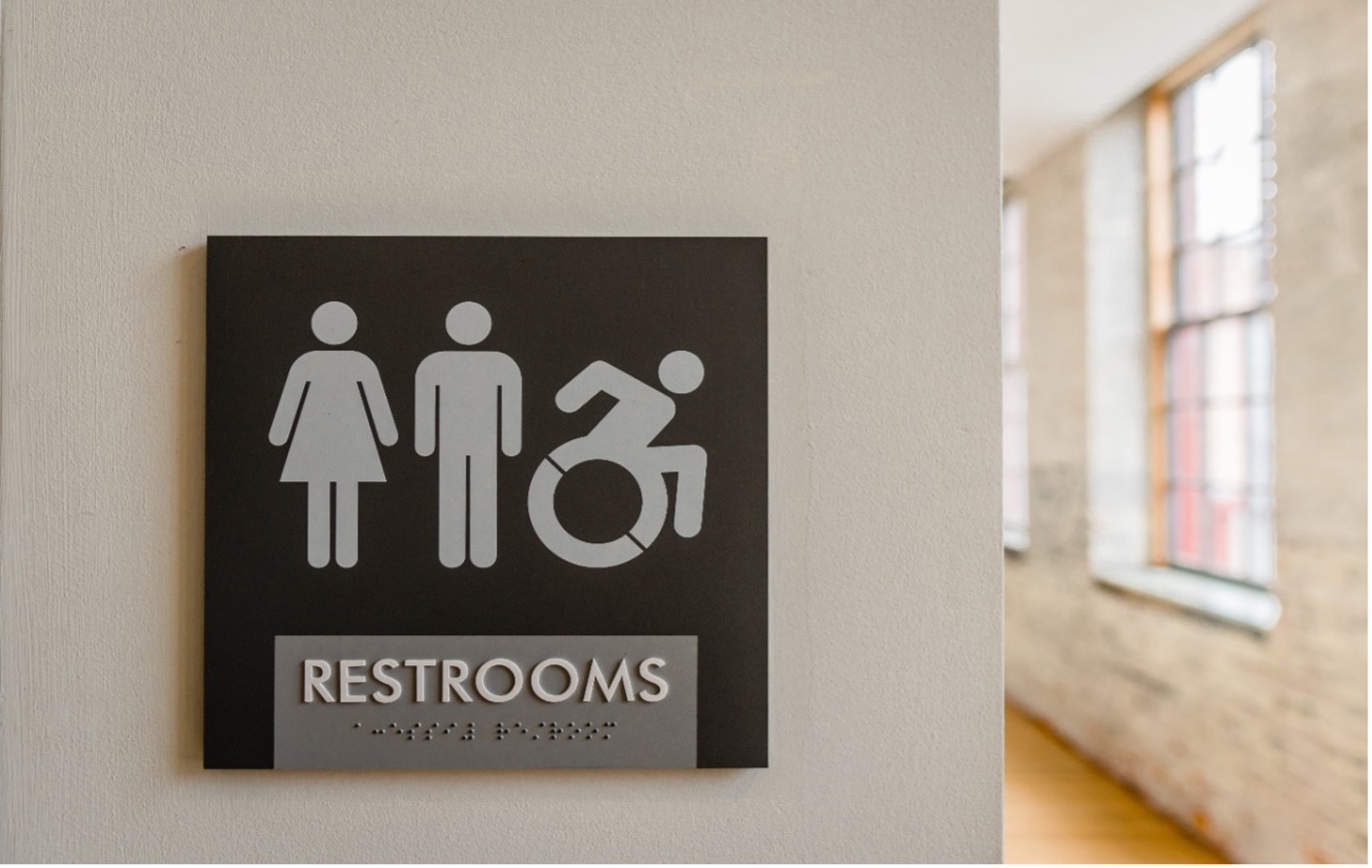
An example of Inclusive signage
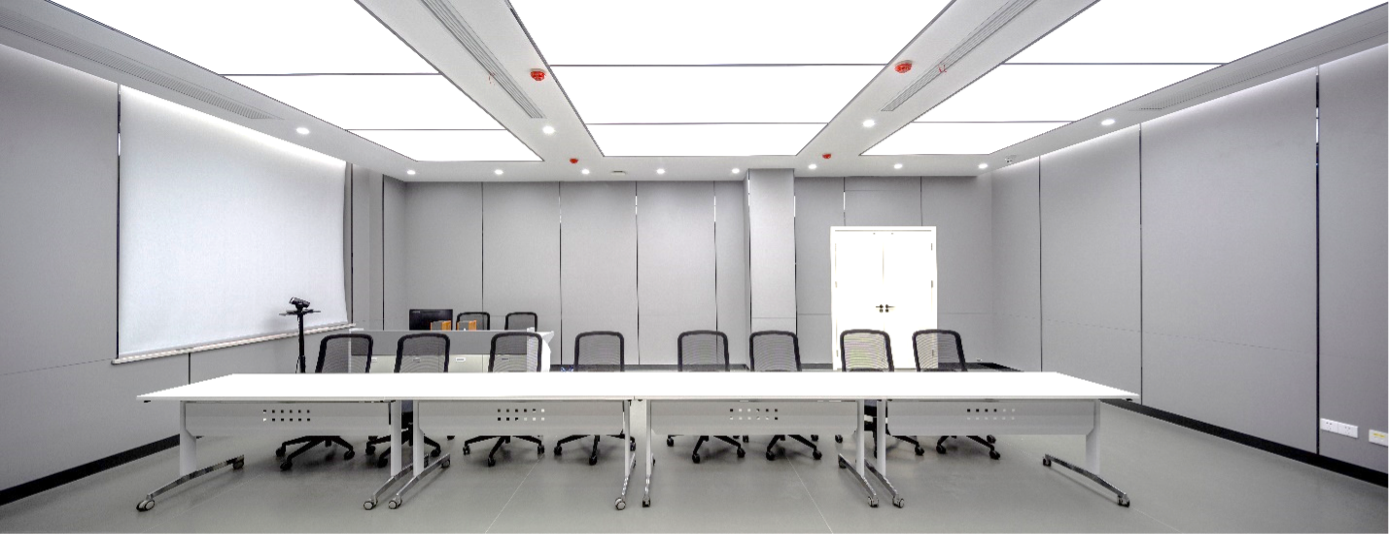
An Example of privacy panels under workstations and meeting tables
- Foster a culture of respect and inclusivity through leadership modeling and communication.
- A cultural shift towards using inclusive language, moving away from gendered terms to foster respect and inclusion. For example: Saying “guys” or “ladies” to address a group of people is gendered language. Inclusive ways to address a group include “folks,” “people,” “you all, “y’all,” “team,” “Welcome all or everyone.”
- Respect employees’ chosen names and pronouns and ensure that they are reflected accurately in all workplace systems and documentation.
- Training staff and stakeholders on gender sensitivity, encouraging the use of preferred pronouns, and establishing policies that support diversity and inclusion.
Implementing inclusive policies and practices that help to bridge gender gaps
Implementing policies that support work-life balance, parental leave, and flexible scheduling benefits all employees, regardless of gender.
Here are a few examples:
- Flexible Work Arrangements: Recognizing that individuals have different needs and responsibilities, offering options such as remote work, flexible hours, and compressed workweeks enables employees to balance their professional and personal lives effectively.
- Parental Leave Policies: Establishing comprehensive parental leave policies is crucial for supporting employees during significant life events.
- Inclusive Hiring Practices: creating diverse hiring panels, using gender-neutral language in job descriptions, and actively seeking candidates from underrepresented groups.
- Equal Pay Initiatives: Regularly reviewing and addressing pay gaps, promoting salary transparency, and conducting pay equity assessments prove a commitment to fair compensation for all employees, irrespective of gender.
- Support for Work-Life Balance: Policies that encourage reasonable working hours, limit overtime, and discourage a pervasive culture of overworking contribute to a healthier and more inclusive workplace.
- Gender/single user and Facilities: Implement all gender/single user restroom policies and signage.
- Employee Resource Groups: Setting up Employee Resource Groups (ERGs) focused on gender diversity provides a platform for employees to connect and share experiences.
- Regular Diversity Audits and Assessments: Periodic diversity audits and assessments help organizations track their progress, find areas for improvement, and ensure ongoing commitment to gender inclusivity. Regularly reviewing policies, practices, and demographic data helps organizations stay accountable and responsive to evolving needs.
Inclusive policies and practices benefit everyone
Expanding the integration of gender perspectives in design not only ensures inclusion but also delves into recognizing and fulfilling the varied needs of everyone. This comprehensive approach is crucial for fostering fair, resilient communities, advancing social justice, and supporting economic growth through sustainable and inclusive solutions. Essential to this is the implementation of Inclusive spatial considerations, progressive policies, such as fair maternity and parental leave, which many organizations overlook. By advocating for these space upgrades, policy updates, we champion a balanced support system for all genders in the workplace, underscoring the importance of both parents in child-rearing responsibilities. This step towards gender inclusivity not only addresses existing disparities but also paves the way for a future that values and harnesses the full potential of our diverse population, creating a more supportive and inclusive society for everyone.
Did you know?
Dive into some eye-opening facts that spotlight women’s journey across various sectors, and why inclusivity in design matters more than ever!
- Global Workforce Shifts: Did you know the percentage of women in the global labor force was about 46.9% in 2020, slightly down from 50.2% in 1990? It’s a reminder of the changing dynamics in workplaces worldwide.
- Design Evolution: From seating to safety equipment, integrating women’s measurements (anthropometry) into design became a norm only in the late 20th century.
- Safer Drives: The automotive industry introduced female crash test dummies in the ’80s, but it wasn’t until the 2000s that models truly reflecting women’s anatomy appeared.
- Safety Gear Reimagined: In sectors like construction and engineering, companies are now producing safety equipment such as gloves, hard hats, and vests specifically designed for women, acknowledging the diversity in body shapes and sizes, and enhancing safety and comfort on the job.
Ready to get started?
Our Strategy and Consulting team can help!

